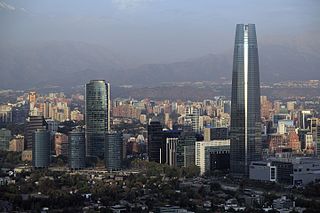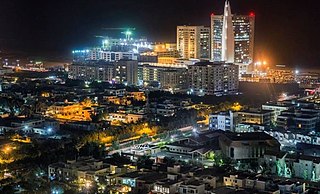
Group of Eleven (G11) is a forum, constituted by mostly developing countries aimed at easing their debt burden (government debt), narrowing the income gap with rich countries and lifting their people out of poverty.

Group of Eleven (G11) is a forum, constituted by mostly developing countries aimed at easing their debt burden (government debt), narrowing the income gap with rich countries and lifting their people out of poverty.
King Abdullah of Jordan first proposed the group in 2005.
The group of eleven is a forum, constituted by mostly developing countries aimed at easing their debt burden and narrowing the gap with rich countries to lift, ‘millions out of poverty’. The specific aim is to garner market access and writing off of the debt burden so that these countries can focus all their resources on generating growth and stability.
The group was created on 20 September 2006. The group comprises mostly lower-middle-income countries.
The members consist of Jordan, Croatia, Ecuador, Georgia, El Salvador, Honduras, Indonesia, Morocco, Pakistan, Paraguay, and Sri Lanka.
The request is made to the G8.
G11 developing countries at their Summit at the Jordanian Dead Sea resort have agreed to push for cooperation with G8 industrialized nations to ease their debts and build prosperous economies. These countries and in fact most of the developing countries require fiscal and monetary space to maintain momentum on progress to lay the foundation for a diversified and sustainable economic growth.
The group asked for exploring avenues for enhancing cooperation among member states to shape their future development needs and strategies as well as greater cooperation with international partners for market access, enhanced productive capacities and development of scientific and technological skills and converting debts to financing aid projects.
G11 countries need targeted assistance and support from the developed countries to accelerate growth, lift millions from poverty and hasten the delivery of the fruits of reforms and social development to larger segments of their population. The G11 group need to enter into political dialogue with the G8 countries for their support to meet development objectives, encourage investment and have greater market access.
Outstanding Debt on the developing countries places a great burden on export earnings and fiscal revenues. Moreover, tariffs imposed by the G8 and other developed countries on imports are the major hurdles in the way of improving the living standard of the peoples of the developing and under developed countries through export led growth.
The G11 argues that it is in the interest of the G8 and others to enter into arrangement with the indebted countries and convert the debts into assistance for social development projects so that the poor masses could reap the fruits of development. This would help in reducing the gap between the rich and the poor, create more job opportunities, alleviate poverty and contribute to creating an atmosphere of goodwill, fraternity and understanding among the peoples leading to the cherished objective of prosperity, peace and stability around the globe.

The economy of Chile is a market economy and high-income economy as ranked by the World Bank. The country is considered one of South America's most prosperous nations, leading the region in competitiveness, income per capita, globalization, economic freedom, and low perception of corruption. Although Chile has high economic inequality, as measured by the Gini index, it is close to the regional mean.

The economy of Djibouti is derived in large part from its strategic location on the Red Sea. Djibouti is mostly barren, with little development in the agricultural and industrial sectors. The country has a harsh climate, a largely unskilled labour force, and limited natural resources. The country's most important economic asset is its strategic location, connecting the Red Sea and the Gulf of Aden. As such, Djibouti's economy is commanded by the services sector, providing services as both a transit port for the region and as an international transshipment and refueling centre.

The economy of Grenada is largely tourism-based, small, and open economy. Over the past two decades, the main thrust of Grenada's economy has shifted from agriculture to services, with tourism serving as the leading foreign currency earning sector. The country's principal export crops are the spices nutmeg and mace. Other crops for export include cocoa, citrus fruits, bananas, cloves, and cinnamon. Manufacturing industries in Grenada operate mostly on a small scale, including production of beverages and other foodstuffs, textiles, and the assembly of electronic components for export.

Haiti is a free market economy with low labor costs. A republic, it was a French colony before gaining independence in an uprising by its enslaved people. It faced embargoes and isolation after its independence as well as political crises punctuated by foreign interventions and devastating natural disasters. Haiti's estimated population in 2018 was 11,439,646. The Economist reported in 2010: "Long known as the poorest country in the Western hemisphere, Haiti has stumbled from one crisis to another since the Duvalier years."

The economy of Jordan is classified as an emerging market economy. Jordan's GDP per capita rose by 351% in the 1970s, declined 30% in the 1980s, and rose 36% in the 1990s. After King Abdullah II's accession to the throne in 1999, liberal economic policies were introduced. Jordan's economy had been growing at an annual rate of 8% between 1999 and 2008. However, growth has slowed to 2% after the Arab Spring in 2011. The substantial increase of the population, coupled with slowed economic growth and rising public debt led to a worsening of poverty and unemployment in the country. As of 2019, Jordan has a GDP of US$44.4 billion, ranking it 89th worldwide.

The economy of Lebanon has been experiencing a large-scale multi-dimensional crisis since 2019, including a banking collapse, a liquidity crisis and a sovereign default. It is classified as a developing, lower-middle-income economy. The nominal GDP was estimated at $19 billion in 2020, with a per capita GDP amounting to $2,500. In 2018 government spending amounted to $15.9 billion, or 23% of GDP.

The economy of Nicaragua is focused primarily on the agricultural sector. Nicaragua itself is the least developed country in Central America, and the second poorest in the Americas by nominal GDP. In recent years, under the administrations of Daniel Ortega, the Nicaraguan economy has expanded somewhat, following the Great Recession, when the country's economy actually contracted by 1.5%, due to decreased export demand in the American and Central American markets, lower commodity prices for key agricultural exports, and low remittance growth. The economy saw 4.5% growth in 2010 thanks to a recovery in export demand and growth in its tourism industry. Nicaragua's economy continues to post growth, with preliminary indicators showing the Nicaraguan economy growing an additional 5% in 2011. Consumer Price inflation have also curtailed since 2008, when Nicaragua's inflation rate hovered at 19.82%. In 2009 and 2010, the country posted lower inflation rates, 3.68% and 5.45%, respectively. Remittances are a major source of income, equivalent to 15% of the country's GDP, which originate primarily from Costa Rica, the United States, and European Union member states. Approximately one million Nicaraguans contribute to the remittance sector of the economy.

The economy of Pakistan is categorized as a developing economy. It ranks as the 24th-largest based on GDP using purchasing power parity (PPP) and the 46th largest in terms of nominal GDP. With a population of 232 million people as of 2023, Pakistan’s position at per capita income ranks 161st by GDP (nominal) and 138th by GDP (PPP) according to the International Monetary Fund (IMF).
The category of newly industrialized country (NIC), newly industrialized economy (NIE) or middle income country is a socioeconomic classification applied to several countries around the world by political scientists and economists. They represent a subset of developing countries whose economic growth is much higher than that of other developing countries; and where the social consequences of industrialization, such as urbanization, are reorganizing society.

The government budget balance, also referred to as the general government balance, public budget balance, or public fiscal balance, is the difference between government revenues and spending. For a government that uses accrual accounting the budget balance is calculated using only spending on current operations, with expenditure on new capital assets excluded. A positive balance is called a government budget surplus, and a negative balance is a government budget deficit. A government budget presents the government's proposed revenues and spending for a financial year.

The heavily indebted poor countries (HIPC) are a group of 39 developing countries with high levels of poverty and debt overhang which are eligible for special assistance from the International Monetary Fund (IMF) and the World Bank.
A country's gross external debt is the liabilities that are owed to nonresidents by residents. The debtors can be governments, corporations or citizens. External debt may be denominated in domestic or foreign currency. It includes amounts owed to private commercial banks, foreign governments, or international financial institutions such as the International Monetary Fund (IMF) and the World Bank.

Trade justice is a campaign by non-governmental organisations, plus efforts by other actors, to change the rules and practices of world trade in order to promote fairness. These organizations include consumer groups, trade unions, faith groups, aid agencies and environmental groups.
The debt of developing countries usually refers to the external debt incurred by governments of developing countries.

In the United Nations, the Millennium Development Goals (MDGs) were eight international development goals for the year 2015 created following the Millennium Summit, following the adoption of the United Nations Millennium Declaration. These were based on the OECD DAC International Development Goals agreed by Development Ministers in the "Shaping the 21st Century Strategy". The Sustainable Development Goals (SDGs) succeeded the MDGs in 2016.
Trade can be a key factor in economic development. The prudent use of trade can boost a country's development and create absolute gains for the trading partners involved. Trade has been touted as an important tool in the path to development by prominent economists. However trade may not be a panacea for development as important questions surrounding how free trade really is and the harm trade can cause domestic infant industries to come into play.
Structural adjustment programs (SAPs) consist of loans provided by the International Monetary Fund (IMF) and the World Bank (WB) to countries that experience economic crises. Their stated purpose is to adjust the country's economic structure, improve international competitiveness, and restore its balance of payments.

Poverty reduction, poverty relief, or poverty alleviation is a set of measures, both economic and humanitarian, that are intended to permanently lift people out of poverty.

The economic history of Brazil covers various economic events and traces the changes in the Brazilian economy over the course of the history of Brazil. Portugal, which first colonized the area in the 16th century, enforced a colonial pact with Brazil, an imperial mercantile policy, which drove development for the subsequent three centuries. Independence was achieved in 1822. Slavery was fully abolished in 1888. Important structural transformations began in the 1930s, when important steps were taken to change Brazil into a modern, industrialized economy.

The 10th G7 Summit was held in London, England, United Kingdom from 7 to 9 June 1984. The venue for the summit meetings was Lancaster House in London.